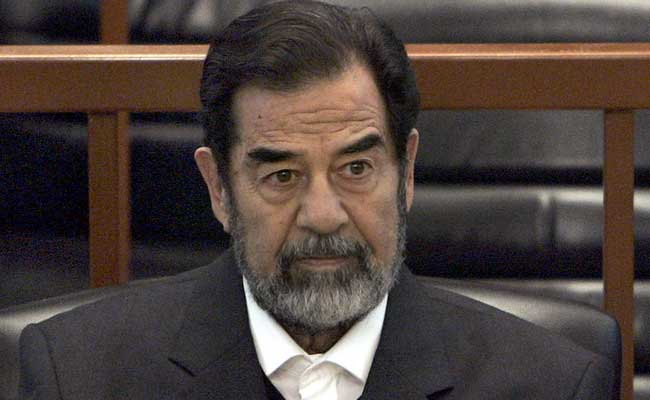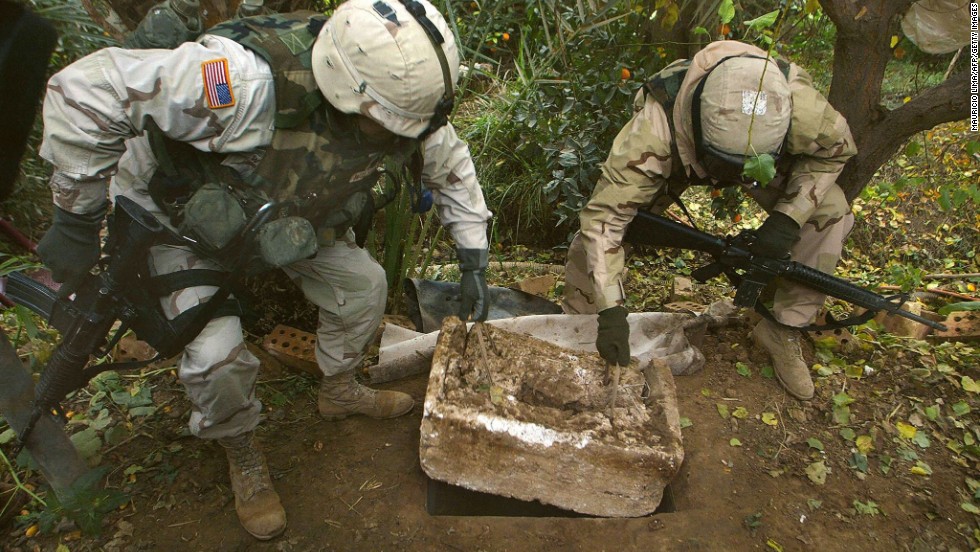

#SADDAM HUSSEIN CAPTURE PWNED TRIAL#
After a trial marred by charges of US interference and procedural flaws, an Iraqi court convicted him of crimes against humanity and sentenced him to death by hanging. Despite a disastrous loss to a US-led alliance in the 1991 Gulf War, Hussein clung to power and survived more than a decade of United Nations sanctions and weapons inspections.Īfter the 2003 US invasion, Hussein became the first modern Arab leader to be deposed by a foreign power. It was only after he invaded Kuwait in 1990 that the West turned against him. During the eight-year war with Iran, the United States and other Western powers supplied Hussein with weapons and military intelligence that prolonged the fighting. Hussein had feared that Ayatollah Ruhollah Khomeini, the charismatic leader of Iran’s 1979 Islamic revolution, would inspire the Shiite majority in Iraq to rise up against Baathist rule. His ruling Sunni Arab minority persecuted the country’s Shiites and ethnic Kurds.įor much of his reign, and especially after he invaded Iran in 1980, Hussein was backed by the United States, Europe, and most Arab governments. Under his rule, hundreds of thousands of Iraqis were arrested, tortured, executed, or disappeared. But Hussein also ruthlessly suppressed all opposition and dragged his country into two successive-and spectacularly destructive-wars with its neighbors. Iraq became one of the richest and most developed countries in the Arab world. He also led a campaign to expand education and healthcare build roads and highways and create new industries. After nationalizing the oil industry, Hussein used the profits to modernize Iraq’s countryside by distributing land to farmers and mechanizing agricultural production. Nasser’s revolution inspired a wave of rebellions in the 1950s and ’60s, stretching from Libya to Syria to Iraq.īy the early 1970s, Hussein oversaw the seizure of Iraqi oil assets from foreign companies just as oil prices were beginning to rise sharply. In Egypt, a young military officer named Gamal Abdel Nasser had led a revolt against the British-backed king in 1952. It was a time of upheaval, in which the political and feudal elites-the allies of the old European colonial powers-were losing their grip. Saddam Hussein rose to power in the 1970s on a wave of nationalist, revolutionary sentiment that had been sweeping the Middle East for years. Under Hussein’s rule, Iraq became one of the richest and most developed countries in the Arab world. His legacy as a supposedly strong leader who kept Iraq together, by brutal force, also reverberates for Sunnis in the wider Middle East, which is wracked by sectarian conflict and stalled revolutions. Nine years later, he remains an important symbol for Iraq’s disillusioned Sunni Arab minority. Hussein’s execution cemented his status as a Sunni and Arab nationalist martyr. By refusing to delay the execution, Maliki added another insult to the Sunni world. Typically, Middle Eastern regimes pardon prisoners around the holiday. The impact of these images and sounds-of witnesses taunting Hussein in his final moments, before the dawn call to prayer-should not be underestimated: the execution created a new schism in Sunni-Shiite relations.Īside from the leaked video, the government of then–Iraqi Prime Minister Nouri al-Maliki made another fateful mistake: it executed Hussein at the start of Eid al-Adha, one of the two holiest Muslim holidays. The dictator’s calm, defiant responses to the taunting made him seem like the embodiment of law and order-at a time when Iraq desperately needed a way out of chaos. To Sunnis, the video showed that an angry, lawless mob of Shiites killed Hussein. But this scene was also captured on grainy cell-phone video, with sound, and that video was broadcast throughout the Arab world.
#SADDAM HUSSEIN CAPTURE PWNED TV#
Hussein’s execution was videotaped and an edited version was broadcast by Iraqi state TV without sound. The room quieted briefly, and Hussein recited the single-line Muslim profession of faith, the shahadah (“There is no god but God, and Muhammad is the messenger of God”).

To Sunnis, the video of his execution showed that an angry, lawless mob of Shiites killed Hussein.


 0 kommentar(er)
0 kommentar(er)
